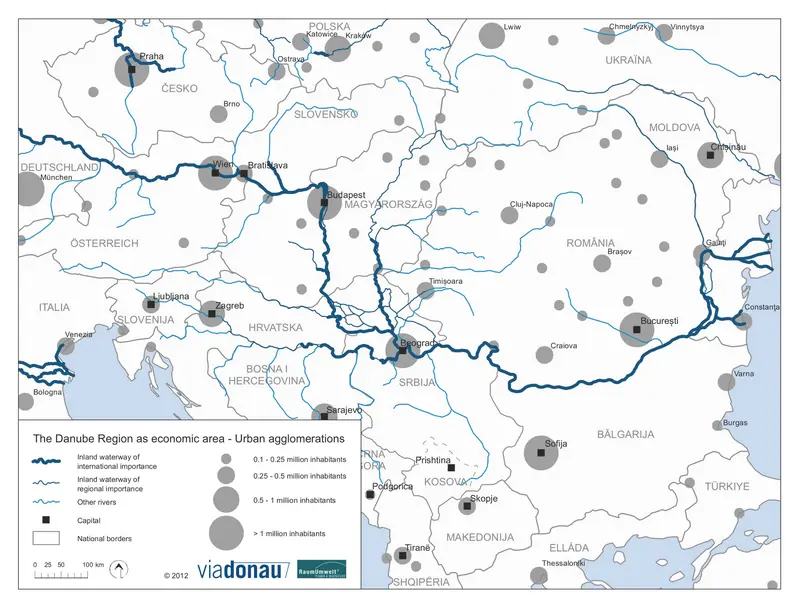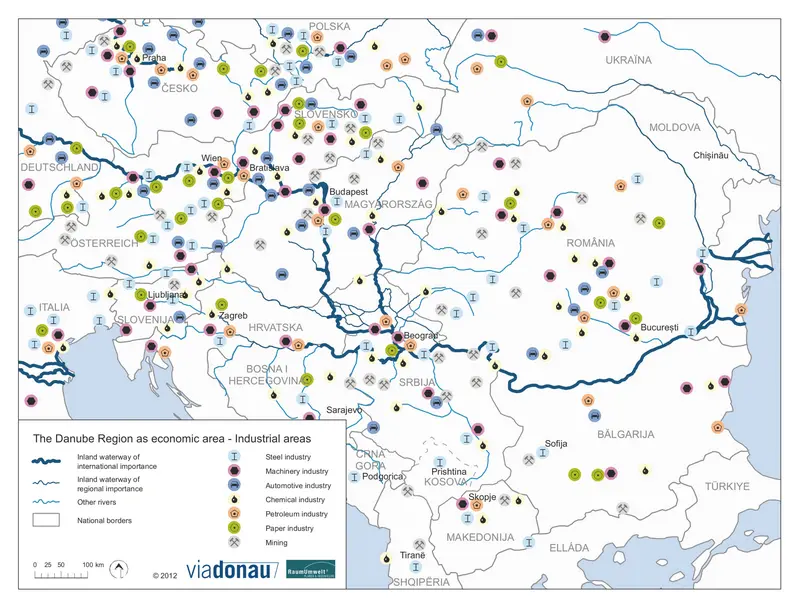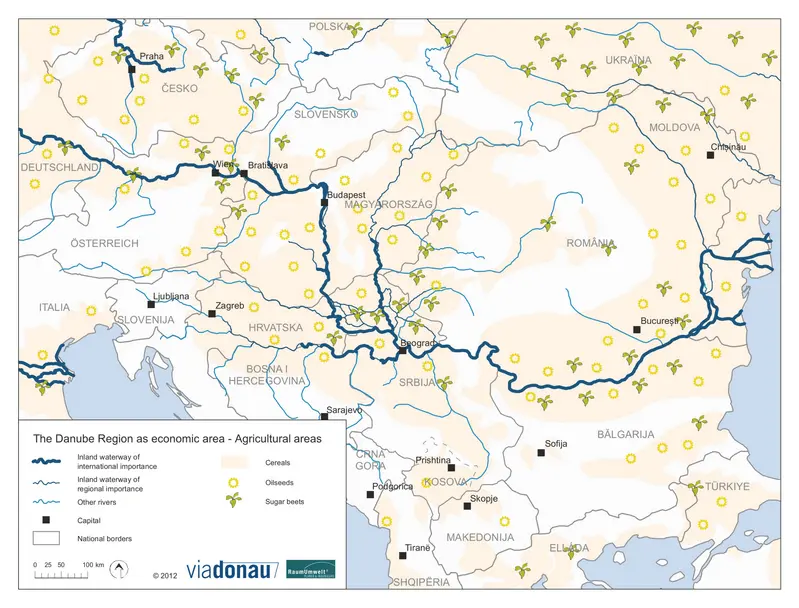The Danube as an axis of economic development
In its function as a transport axis the Danube connects key procurement, production and sales markets that have significant European importance. The gradual integration of the Danube riparian states into the European Union has led to the establishment of dynamic economic areas and trading links along the waterway. Slovakia’s and Hungary’s accession to the EU in 2004 followed by Bulgaria and Romania in 2007 and Croatia in 2013 has seen - the beginning of a new phase of economic development in the Danube region. Serbia received accession candidate status in March 2012.
With nearly 90 million inhabitants, the Danube region is of great economic interest due to its sheer size alone. The economic and political heterogeneity that distinguishes the region is coupled with a dynamic development that is unparalleled anywhere else in Europe. The focus of this economic development lies in the capital cities of the Danube countries. Other urban areas are also playing an ever growing role, in particular as consumer and sales markets. The Danube waterway, as a transport mode, can make a major contribution here by supplying these centres with raw materials, semi-finished and finished products as well as with the disposal of existing substances and waste. The Danube is also of particular importance as a transport mode for the industrial sites that are located along the Danube corridor.
- Bulk freight capacity
- proximity to commodity markets
- ample free transport capacity and
- low transport costs
All these factors add up to make inland navigation the logical partner for resource-intensive industries. Many production facilities for the steel, paper, oil and chemical industries, as well as for the mechanical engineering and automotive industry, are to be found within the catchment area of the Danube. Project cargo and high-quality general cargo are now being transported on the Danube in ever increasing numbers in addition to the traditional bulk cargo.
Due to its fertile soil the Danube region is an important area for the cultivation of agricultural raw materials. These not only serve to ensure the sustainable provision of the urban areas in the vicinity of the Danube, they are also transported along the logistical axis of the Danube before being processed further. The ports and transhipment sites along the Danube play an important role in this respect as locations for storage and processing and as goods collection points and distribution-centres. A considerable amount of these agricultural goods is exported overseas via the Rhine-Main-Danube axis and the respective sea ports (the North Sea, Black Sea).



